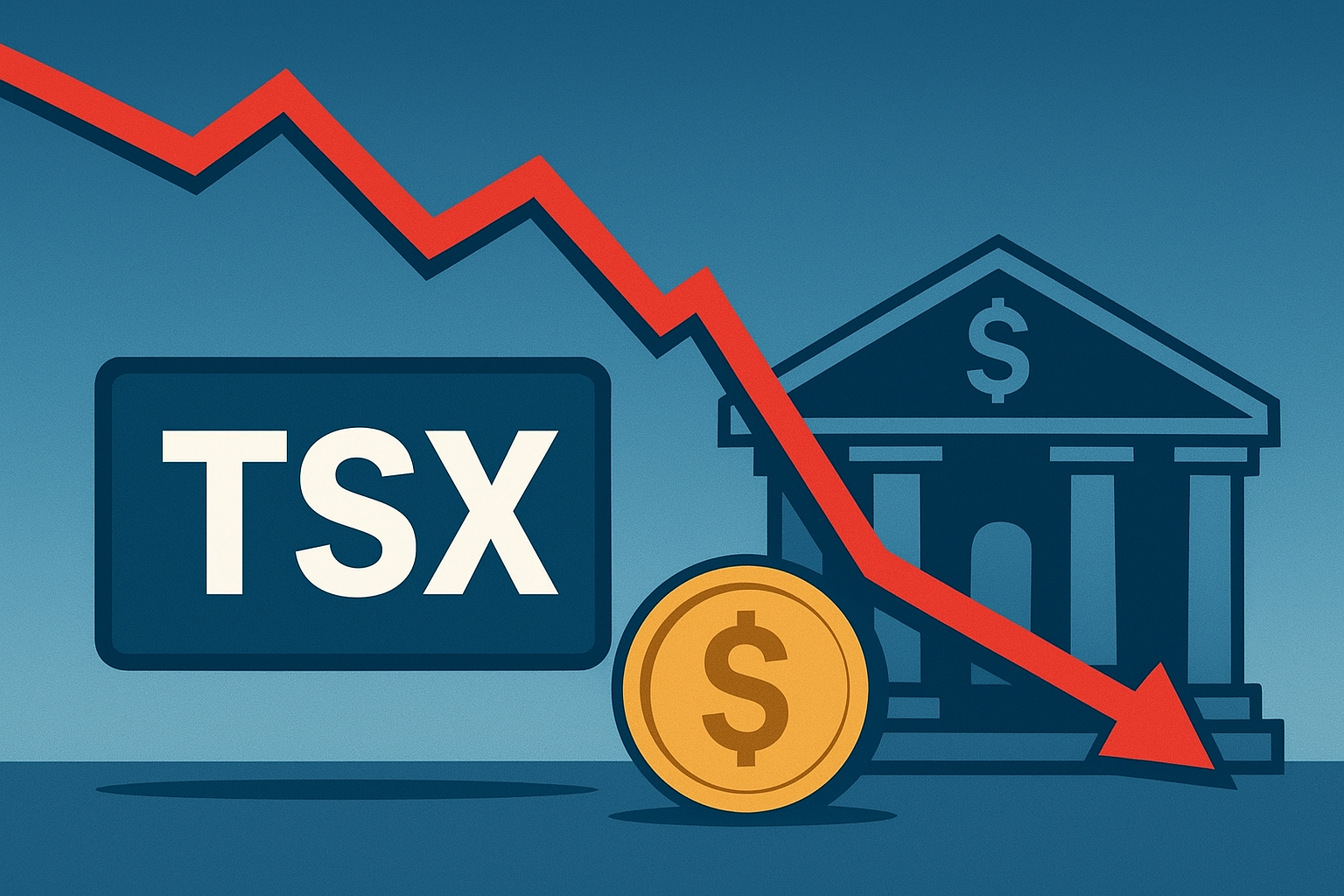Canadian markets opened Friday under pressure as TSX futures fell nearly 0.9%, mirroring weakness in U.S. regional bank shares after disappointing loan data and renewed concerns about internal fraud within smaller lenders. The ripple effect has once again highlighted how cross-border market sentiment remains tethered to U.S. financial stability — even amid Canada’s comparatively resilient banking system.
According to Reuters, the selloff in U.S. regional banks — tracked by the KBW Regional Banking Index, which slipped more than 3% — sparked caution among investors who fear the strain could extend to Canada’s credit markets. Weakness in financials dragged futures lower, although strength in gold and materials stocks helped cushion the broader decline.
Credit Anxiety Returns to Center Stage
Investors are growing wary of potential cracks re-emerging in the North American banking system. This week’s U.S. data revealed a sharper-than-expected contraction in small-business lending, alongside reports of possible accounting irregularities at a mid-tier regional bank. Analysts say the developments are a reminder that tight credit conditions and rising delinquency rates are beginning to test the post-rate-hike resilience of financial institutions.
“Markets are hypersensitive to any signs of renewed stress in U.S. regional banks,” said a senior market strategist quoted by Bloomberg. “The contagion doesn’t need to be direct — even the perception of credit risk is enough to tighten liquidity and dampen risk appetite globally.”
The Toronto Stock Exchange, which often tracks Wall Street sentiment, has been particularly vulnerable to financial-sector shocks, given its heavy weighting in banking and energy. The broader concern now is whether a slowdown in U.S. lending could spill over into Canada’s export-driven sectors, which rely heavily on U.S. demand and capital flows.
Commodities Offer Partial Relief
Despite the equity weakness, gold prices surged past $4,300 per ounce this week — their best rally since 2008 — as investors sought safety amid growing financial stress and geopolitical uncertainty. The materials sector, including gold miners and base metal producers, helped offset some of the losses in the TSX.
“Gold’s breakout is providing a natural hedge against financial stress,” noted analysts at RBC Capital Markets. “If volatility persists in the banking space, the rotation into tangible assets like gold and copper could accelerate.”
Energy stocks, meanwhile, showed mixed performance as oil prices hovered around $89 a barrel, supported by OPEC+ production discipline but capped by global growth concerns.
Why This Matters for Investors
The renewed weakness in regional banks is more than just a sentiment story — it could have tangible economic implications. A pullback in lending, particularly from smaller U.S. banks that serve local businesses, may weaken growth in the real economy, thereby reducing demand for Canadian exports and tightening overall liquidity conditions.
Moreover, the yield curve remains inverted, a classic signal of economic caution. As of Friday morning, the U.S. 2-year Treasury yield traded near 4.28%, while the 10-year sat around 3.92%, reflecting persistent market skepticism about near-term growth prospects.
For Canadian investors, this environment favors a defensive tilt — with sectors like utilities, telecoms, and precious metals offering relative stability. The Bank of Canada’s upcoming policy meeting will also be closely watched for any dovish shifts that could further influence the Canadian dollar and equity valuations.
Future Trends to Watch
- U.S. Banking Stability: Keep an eye on upcoming quarterly earnings reports from U.S. regional banks and any disclosures related to loan losses or internal controls.
- Cross-Border Contagion: Watch for spillover effects in Canadian credit spreads and interbank funding markets.
- Gold and Commodities Momentum: Continued investor rotation into tangible assets could benefit TSX-listed miners.
- Policy Shifts: Any softening in central bank language on rate cuts or liquidity support could drive volatility higher.
Key Investment Insight
Investors should maintain a balanced, risk-aware posture — favoring defensive sectors while selectively adding exposure to safe-haven assets like gold. While the TSX’s near-term outlook may hinge on U.S. banking headlines, volatility could also create opportunities in undervalued materials and infrastructure plays.
Staying nimble — and monitoring both credit data and yield curve dynamics — remains critical in a market increasingly defined by interconnected financial risks.
Stay ahead of the markets with MoneyNews.Today, your trusted source for daily investor insights and macro trends shaping tomorrow’s financial landscape.





